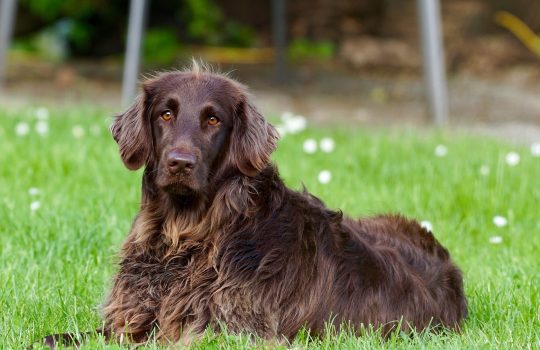Hey, there fellow dog lovers! Are you ready to teach your furry friend how to sit on command? This is a great behaviour to start with and can lay the foundation for other training commands. In this blog post, we will go over the steps to help you train your dog to sit using positive reinforcement methods. With patience, consistency, and rewards, your pup will be sitting like a pro in no time. So, let’s get started!
Starting with a hand signal and voice cue
Now that you’ve introduced your furry friend to the idea of obedience training, it’s time to train your dog to get started with one of the most important commands: “Sit.” For me, starting with a hand signal and voice cue has always been the best approach. By holding my palm up with my fingers spread, and giving the verbal command “Sit,” I can get my dog to understand what I’m asking for. It’s important to make sure you’re consistent with your tone and the way you deliver the command. Once your dog starts to get the hang of it, you can start gradually moving to voice cues only, giving your pup the opportunity to learn the command without being reliant on visual cues. Remember to mark progress with rewards, and to use a treat as a training lure if necessary. And don’t forget to keep your pup on a leash and avoid forceful training techniques. By encouraging natural sitting behaviour, and mastering the “Sit” command, you’ll be well on your way to having a well-trained, well-behaved dog.
Gradually moving to voice cue only
Now that my pup is responding well to both my hand signal and the verbal cue for “Sit”, it’s time to gradually shift to using only my voice. This is an important step in our training journey because I want my dog to be able to listen to my voice commands even without any physical cues. I’ll start by saying “Sit” just as my dog is about to sit down, then gradually start saying it earlier and earlier until my pup is responding solely to my voice. It’s a fun process to watch my dog learn and grow, and I’m so proud of how far we’ve come in our training. Plus, the rewards and positive reinforcement make it a joyful experience for both of us!
Adding physical gestures to training
Now that your dog understands the hand signal and voice cue for sitting, it’s time to train your dog to with physical gestures. Remember to always be patient and positive throughout the training process. Start by placing your hand on your dog’s hindquarters and gently pushing down as you give the sit command. This will help guide them into the proper position. Once they are consistently sitting with the hand gesture and voice cue, you can gradually phase out the physical guidance. With practice, your furry friend will learn to sit on command without any physical prompting. Keep up the positive reinforcement with treats and praise when they successfully follow your command. With consistency, patience, and positive reinforcement, your pup will master the “sit” command in no time!
Marking progress with rewards
Wow, we’ve made some great progress in teaching our pup to sit! Now it’s time to focus on marking their progress with rewards. Remember, our dog repeats behaviours that are rewarding to them, so it’s important to continue showing them positive reinforcement when they do something correctly. Whether it’s a treat or praise, make sure to give it to them every time they sit, even if it’s just a small gesture or movement towards the correct position. With consistency and repetition, we’ll continue to see improvement in our dog’s ability to master the ‘sit’ command. I’m feeling so proud of our pup’s progress!
Train your dog by using a treat as a training lure
Using treats as a training lure has been one of the most effective methods we’ve used in teaching dogs to sit. As I mentioned earlier, it’s important to start with a high-value treat that your dog will be motivated to work for. Holding the treat in your hand, you can easily manipulate your pup’s movement by guiding them with the treat. Once they are in the sitting position, immediately reward them with a treat and lots of verbal praise. Over time, you can fade out the treat lure and just use your hand signal and voice cue to prompt your dog to sit. It’s important to keep the training sessions short and positive to keep your pup engaged and excited to learn. Remember to always mark their progress with rewards and make training feel like a fun game for both you and your furry friend.
Keeping your pup on a leash
Now that we’ve covered how to use hand signals and voice cues to train your puppy to sit, it’s important to keep them on a leash during the training process. Not only does this ensure their safety, but it also helps to keep their focus on you and the task at hand. As we mentioned earlier, letting your puppy drag a leash around at home can help them get used to the feeling of being on a leash before you begin training. Once you start teaching them the “Sit” command, try using a lightweight collar and leash to guide them. Remember to stop moving forward if they pull on the leash, and reward them when they sit calmly at your side. Using a leash can be a valuable tool for keeping your puppy on track during training, but be sure to avoid forceful techniques and encourage natural sitting behaviour. With patience and positive reinforcement, your furry friend will be sitting on command in no time!
Avoiding forceful training techniques
I have found that avoiding forceful training techniques is key to successfully teaching your dog the “Sit” command. It’s important to remember that your dog wants to please you, and using force can lead to fear and mistrust. Instead, focus on positive reinforcement and consistent training methods. As mentioned before, using a treat as a lure can be helpful, but it’s also important to gradually decrease reliance on treats and transition to using verbal cues and hand signals. And remember, always reward good behaviour and never punish bad behaviour. A happy and well-trained dog is possible with patience, positivity, and consistency.
Encouraging natural sitting behaviour
Encouraging natural sitting behaviour is an important aspect of dog training, and it ties in perfectly with the previous sections we’ve covered. By setting a good foundation while you train your dog and using positive reinforcement, my dog has learned to sit naturally without any forceful techniques. I start by simply waiting for my pup to sit on their own and rewarding them with praise and treats. This gradual approach helps to build a strong association between the behaviour and the reward, making it more likely that they will sit on command when training. Knowing that my pup is comfortable sitting on its own helps me to feel more confident when moving on to the more advanced steps of training, making the whole experience more fun and enjoyable for both of us.
Train your dog by mastering the ‘Sit’ command
Alright, we’re on the last section of our how to train your dog series on teaching your dog to sit! After going through the steps of starting with a hand signal and voice cue, gradually moving to voice cue only, adding physical gestures, marking progress with rewards, using treats as a training lure, keeping your pup on a leash, avoiding forceful techniques, and encouraging natural sitting behaviour, you’re now ready to master the ‘Sit’ command!
Remember to be patient with your furry friend and keep practising. Once they consistently respond to the ‘Sit’ command, you can start moving on to other basic obedience commands. Don’t forget to continue using positive reinforcement techniques and rewarding good behaviour. Before you know it, you’ll have a well-behaved pup who’s happy to show off its new skills. Congratulations on your training journey!




